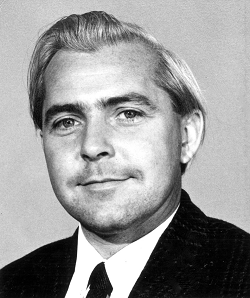Authority on the igneous geology of the Sudan
 Professor David Almond received his early education in Darlington, Co. Durham, and later read geology at the University of Durham. He graduated with a first-class honours degree and continued at Durham to gain a Ph.D. in 1960 under Sir Kingsley Dunham. His thesis topic was “The Tertiary igneous geology of Strathaird, Skye, Scotland”.
Professor David Almond received his early education in Darlington, Co. Durham, and later read geology at the University of Durham. He graduated with a first-class honours degree and continued at Durham to gain a Ph.D. in 1960 under Sir Kingsley Dunham. His thesis topic was “The Tertiary igneous geology of Strathaird, Skye, Scotland”.
Uganda and the Sudan
His first overseas posting was to Kampala, Uganda, with the then British Overseas Geological Survey working on the structure and metamorphism of the basement complex of northeast Uganda. His academic career continued at the Department of Geology, University of Sudan, and since the late 1960s became particularly interested in the structure and origin of intra-plate ring complexes that penetrated the basement of northern and central Sudan and in the associated mineralization. Foremost amongst these bodies was Sabaloka, a large (20km across) sub-volcanic Devonian granitic complex, which straddles the Nile at the sixth cataract, a place of considerable natural beauty and an ideal location for week-end mapping trips with geology students. In 1977 David published a seminal paper on this complex in The Philosophical Transactions of the Royal Society Society of London (vol. 287, pp. 595-633).
Image credit: Kingston University Archives and Special Collections
Kingston College of Technology
In 1969 David joined the Dept. of Geology and Geography at the Kingston College of Technology, shortly to become the School of Geology, Kingston Polytechnic. During his time at Kingston he coauthored two undergraduate text books,1) Field Mapping for Geology Students (Ahmed and Almond, Hamlyn, 1976) and 2) Rocks, Minerals and Crystals (Almond and Whitten, George Allen and Sons, 1983). David was a major influence in advocating the progress of Kingston Polytechnic to full university status. In 1980, he returned to the University of Khartoum for several years of teaching and research in the country he was strongly attached to, continuing his work with his Ph.D. research student, Des O'Halloran, on the migrating ring complexes of the Bayuda Desert of northern Sudan.
From 1986 to 1989, he was attached to the Department of Geology, University of Kuwait, where I first met him. Many were the times when he accompanied me in the field and became fascinated by modern day geologic processes in the Arabian Gulf. When this author moved to the School of Earth Sciences at the University of Oman, following the Gulf War, David came over for a short period for teaching and fieldwork in the Oman Mountains.
In 1987, David organized a field trip to Sudan to visit the Sabaloka Complex and to conduct a geophysical traverse across a reworked suture zone in the Red Sea Hills (J. African Earth Sciences, vol. 6, p.823-832). Accompanied by David’s former colleague and friend Dr. Faroukh Ahmed, we left Port Sudan and drove to Khartoum, briefly straying into Eritrea by taking a wrong turn, spending the nights under the skies in the rocky desert. We stopped for a full day at Sabaloka to see the ring-complex where David gave a masterful account of the area.
Sri Lanka
David’s last posting was in Sri Lanka with the Institute of Fundamental Studies in Kandy where he studied the charnockites of the central highlands. I remember him chugging around his field area on a motor-bike. I worked with David on landslides and their control on alluvial gem deposits in Sri Lanka. He continued to publish on Sudanese ring complexes until the late 1990s, and his publication record attests to his lasting contribution to geology. The maps and cross-sections he published show him to be a skilled draughtsman, no doubt a talent gained from his master-engraver father.
Eventually, we both retired from academia to our respective home countries. David settled in Penrith close to his beloved Lake District which he had known from his school days, and took up water colour painting as a hobby while continuing with his hiking. We kept in touch regularly, writing over 60 letters over the years which I have preserved. He disliked using laptops and preferred the old-fashioned way of putting pen to paper. Whenever David visited us in Sri Lanka our discussions clearly displayed his continuing preoccupation with geology.
David died on the 15th of June 2019 due to complications resulting from pulmonary fibrosis. He will be remembered for his courtesy and kindness to colleagues and students and for his fine sense of humour, making him an ideal companion in the field. He will be greatly missed by his family, former colleagues and friends in the UK, Sudan, Kuwait, Oman and Sri Lanka. He is survived by his son John, a Cambridge educated palaeontologist now settled in South Africa, and his daughters Sarah and Mary. I thank Nigel Harris for providing details of his early career.
By Ana Gunatilaka